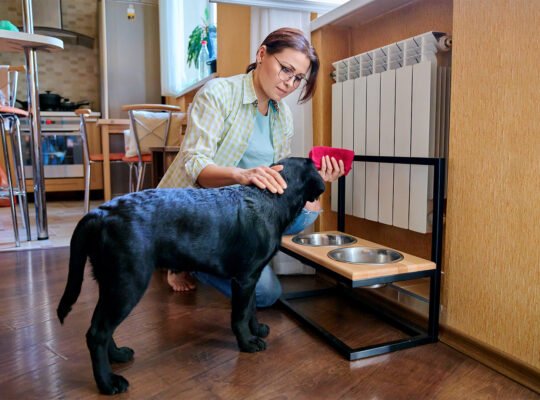The Healing Power of Pets: Understanding the Benefits of Animal-Assisted Therapy
Excerpt: Animal-assisted therapy harnesses the incredible healing power of pets to enhance the well-being of individuals. This article delves into the benefits of animal-assisted therapy, exploring how animals can positively impact physical, mental, and emotional health. Discover the transformative effects of pets in promoting healing and overall well-being.
Introduction
Pets have a unique ability to touch our lives in profound ways. They offer companionship, love, and unwavering loyalty. But did you know that the presence of animals can also play a crucial role in promoting healing and well-being? Animal-assisted therapy, also known as AAT, is a therapeutic approach that utilizes the healing power of pets to improve the physical, mental, and emotional health of individuals. In this article, we will delve into the benefits of animal-assisted therapy, exploring how the presence of animals can create a positive impact and contribute to overall well-being.
The Physical Benefits of Animal-Assisted Therapy
Animal-assisted therapy can have remarkable effects on physical health. Consider the following benefits:
-
Reduced Blood Pressure and Heart Rate
Interacting with pets has been shown to lower blood pressure and heart rate in individuals. The calming presence of animals and the act of petting or cuddling them releases endorphins, which help reduce stress and promote relaxation. This can have a positive impact on cardiovascular health.
-
Enhanced Motor Skills and Coordination
Engaging in activities with animals, such as throwing a ball or taking a dog for a walk, can improve motor skills and coordination. These activities require physical movement and can be particularly beneficial for individuals undergoing rehabilitation or those with physical disabilities.
-
Increased Physical Activity and Exercise
Owning a pet often encourages increased physical activity and exercise. Walking, playing, and participating in activities with pets can help individuals maintain an active lifestyle, leading to improved overall physical fitness.
The Mental and Emotional Benefits of Animal-Assisted Therapy
Animal-assisted therapy also has profound effects on mental and emotional well-being. Consider the following benefits:
-
Reduced Stress and Anxiety
Pets have a remarkable ability to reduce stress and anxiety. Spending time with animals can release oxytocin, a hormone associated with stress reduction and increased feelings of well-being. The presence of a pet can provide comfort and a sense of calm during times of distress or emotional turmoil.
-
Improved Mood and Alleviated Depression
Interacting with animals can boost mood and alleviate symptoms of depression. Pets offer unconditional love and support, providing companionship and a sense of purpose. The bond formed with a pet can create a positive emotional connection and help individuals combat feelings of loneliness and sadness.
-
Enhanced Social Interaction and Communication
Pets can act as social facilitators, promoting social interaction and communication among individuals. Animals often serve as conversation starters and can help individuals overcome social barriers or feelings of isolation. This is particularly beneficial for individuals with autism spectrum disorders or those who struggle with social interactions.

Animal-Assisted Therapy in Various Settings
Animal-assisted therapy can be implemented in various settings to provide therapeutic benefits. Some common settings include:
-
Healthcare Facilities
Hospitals, nursing homes, and rehabilitation centers often incorporate animal-assisted therapy as part of their treatment programs. Interacting with animals can improve patient outcomes, boost morale, and provide a source of comfort and joy during challenging times.
-
Schools and Educational Settings
Animal-assisted therapy programs in schools have shown positive effects on children’s emotional well-being, social skills, and even academic performance. Animals in educational settings can reduce stress, enhance concentration, and create a nurturing environment for learning.
-
Mental Health and Counseling Centers
Animal-assisted therapy is increasingly used in mental health and counseling settings. The presence of animals can help individuals open up, build trust, and foster a sense of emotional connection. Therapy animals can be particularly helpful in trauma recovery, addiction treatment, and stress management.
Conclusion: Harnessing the Healing Power of Pets
The healing power of pets is undeniable. Animal-assisted therapy offers a remarkable approach to enhancing physical, mental, and emotional well-being. From reducing stress and anxiety to improving physical fitness and social interactions, the presence of animals can create transformative effects on individuals’ lives. Whether in healthcare facilities, schools, or counseling centers, animal-assisted therapy programs continue to demonstrate the profound benefits pets bring to our overall well-being. So, embrace the healing power of pets and witness the remarkable impact they can have on your life and the lives of others.
















